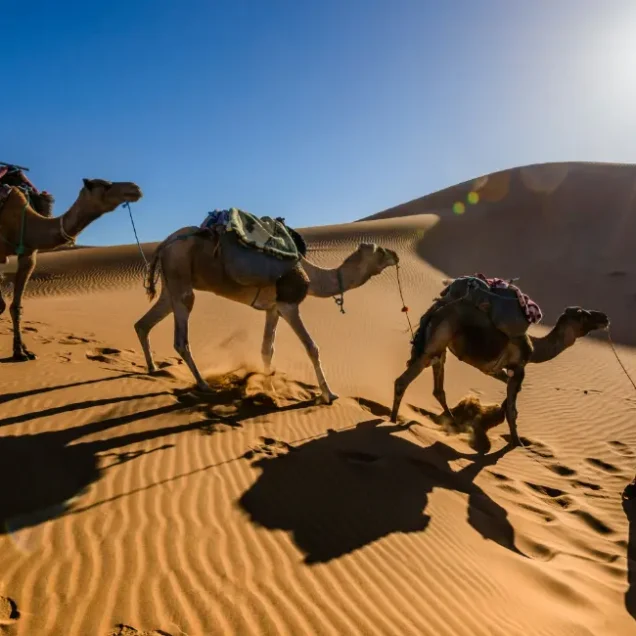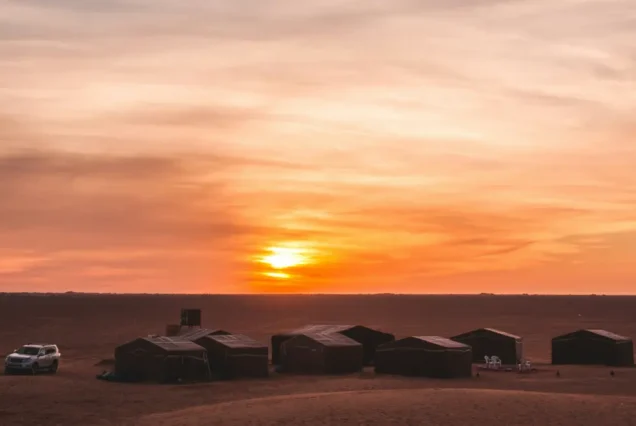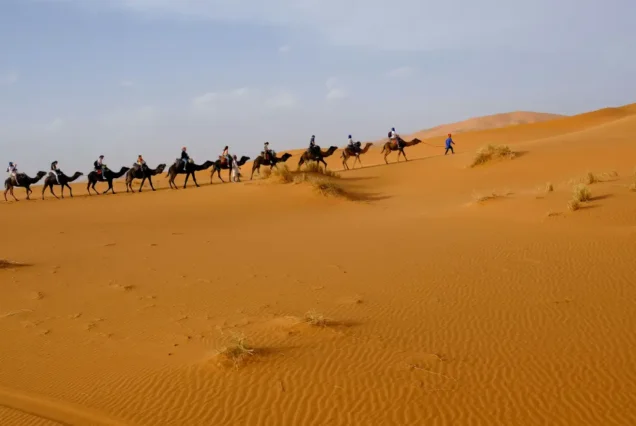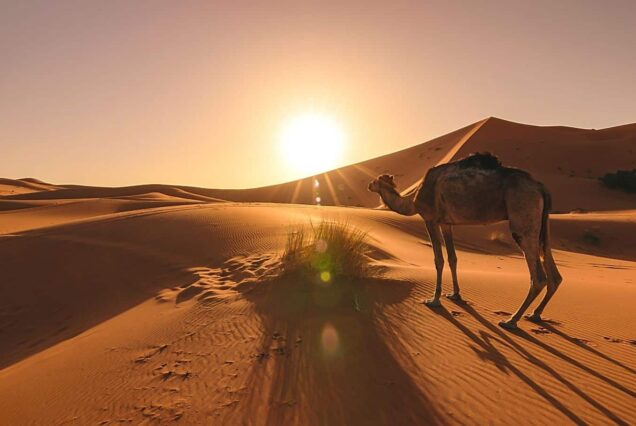

Overview: Moroccan Sahara Desert
The Sahara Desert in Morocco is part of the largest hot desert in the world and offers one of the most iconic and unforgettable travel experiences. Located in the southeastern part of the country, the Moroccan Sahara is known for its vast golden dunes, endless horizons, and traditional Berber culture. It attracts adventurers, photographers, and travelers seeking tranquility and authenticity. The gateway to the Sahara is typically through the town of Merzouga , near the Algerian border, where the famous Erg Chebbi dunes rise dramatically from the desert floor.
Most visitors embark on camel treks to spend the night in traditional desert camps, experiencing stunning sunrises and star-filled skies. A journey into the Moroccan Sahara is more than a trip—it’s an immersion into timeless landscapes and rich nomadic traditions.
Map
Info
The Moroccan Sahara Desert stretches across a dramatic and awe-inspiring landscape of undulating sand dunes, rocky plains, oasis valleys, and ancient kasbahs. Unlike the arid stereotype of a desert, this region is full of contrasts—where life persists in surprising ways amid the heat and silence.
At the heart of the Moroccan Sahara are the Erg Chebbi Dunes , towering golden mounds of sand that shift with the wind and create a seascape of soft curves and shadows. These dunes, some reaching over 150 meters high, are best experienced at sunrise or sunset when the light casts mesmerizing hues of orange, pink, and red across the sands.
Visitors often begin their journeys from Merzouga or Zagora , towns that serve as gateways to the desert. Traditional camel treks take travelers deep into the dunes, where they spend the night in Berber desert camps . These camps offer simple yet comfortable accommodations, along with hearty Moroccan meals, live music, and storytelling beneath a blanket of stars.
Beyond the dunes, the Sahara region includes oasis towns like Erfoud , known for fossil mining, and historical sites such as Rissani , the original capital of the Alaouite dynasty. You’ll also find rugged desert landscapes dotted with date palm groves , clay ksour (fortified villages) , and remote canyons like the Todra Gorge , offering a glimpse into rural Moroccan life and the resilience of desert communities.
The Moroccan Sahara is not only a natural wonder but also a cultural treasure, preserving centuries-old Berber traditions, hospitality, and a deep connection to the land.















